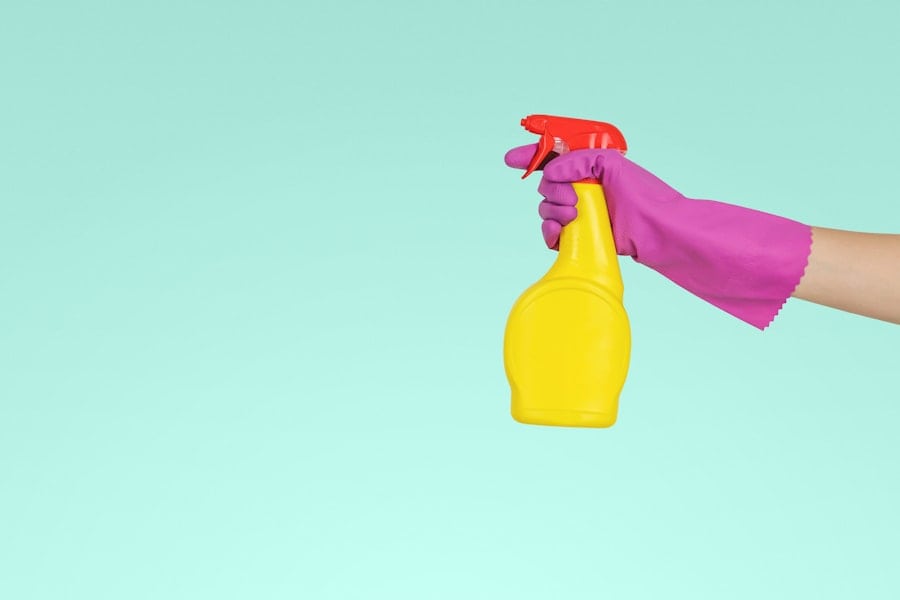The advent of cleaning robots has revolutionized the way we approach household and commercial cleaning tasks. These autonomous machines, designed to perform various cleaning functions, have gained immense popularity due to their ability to save time and reduce the physical burden associated with cleaning. From vacuuming floors to mopping surfaces, cleaning robots have become an integral part of modern living, offering convenience and efficiency that traditional cleaning methods often lack.
The rise of smart home technology has further propelled the adoption of these devices, as consumers increasingly seek solutions that integrate seamlessly into their daily routines. Cleaning robots come in various forms, each tailored to specific cleaning needs. Robotic vacuum cleaners, for instance, are equipped with sensors and brushes that allow them to navigate around furniture and obstacles while effectively picking up dirt and debris.
Other types of cleaning robots include window-cleaning devices and floor scrubbers, each designed with unique functionalities to address different surfaces and environments. As technology continues to advance, the capabilities of these robots are expanding, leading to more sophisticated models that can perform complex tasks with minimal human intervention.
Key Takeaways
- Cleaning robots are automated machines designed to perform cleaning tasks, such as vacuuming and mopping, without human intervention.
- AI plays a crucial role in cleaning robots by enabling them to adapt to different environments, learn from their surroundings, and make autonomous decisions.
- The integration of AI in cleaning robots offers advantages such as improved accuracy, reduced human error, and the ability to handle complex cleaning tasks.
- AI improves efficiency and effectiveness in cleaning robots by optimizing cleaning routes, adjusting cleaning patterns, and identifying and addressing specific cleaning needs.
- The future of cleaning robots with AI holds promise for further advancements in technology, increased adoption in various industries, and the potential for more sophisticated cleaning capabilities.
The Role of AI in Cleaning Robots
Artificial Intelligence (AI) plays a pivotal role in enhancing the functionality and performance of cleaning robots. By incorporating AI algorithms, these machines can process vast amounts of data from their surroundings, enabling them to make informed decisions about their cleaning paths and strategies. For instance, AI-powered cleaning robots can utilize machine learning techniques to recognize patterns in their environment, allowing them to adapt their cleaning routines based on the layout of a room or the type of flooring present.
This adaptability is crucial for optimizing cleaning efficiency and ensuring thorough coverage of all areas. Moreover, AI enables cleaning robots to improve their navigation capabilities significantly. Traditional robotic cleaners often relied on pre-programmed paths or random movement patterns, which could lead to missed spots or inefficient cleaning routes.
In contrast, AI-driven robots can create real-time maps of their environment using advanced sensors and cameras. This mapping capability allows them to identify obstacles, avoid hazards, and even remember previously cleaned areas. As a result, these robots can operate more autonomously and effectively, reducing the need for human intervention during the cleaning process.
Advantages of AI Integration in Cleaning Robots

The integration of AI into cleaning robots offers numerous advantages that enhance their overall performance and user experience. One of the most significant benefits is the ability to learn from past experiences. AI algorithms can analyze data collected during previous cleaning sessions to refine future operations.
For example, if a robot encounters a particularly dirty area during its cleaning cycle, it can adjust its approach for subsequent cleanings by spending more time in that location or employing a more aggressive cleaning method. This continuous learning process ensures that the robot becomes more efficient over time. Another advantage of AI integration is improved user interaction and control.
Many modern cleaning robots come equipped with mobile applications that allow users to customize settings, schedule cleanings, and monitor progress remotely. AI enhances this interaction by providing users with insights into the robot’s performance, such as areas cleaned, battery life, and maintenance needs. Additionally, voice-activated assistants like Amazon Alexa or Google Assistant can be integrated with these robots, allowing users to initiate cleanings or adjust settings through simple voice commands.
This level of convenience not only simplifies the cleaning process but also empowers users to take control of their home maintenance.
How AI Improves Efficiency and Effectiveness
AI significantly enhances the efficiency and effectiveness of cleaning robots through advanced algorithms that optimize their operations. One key aspect is path planning, where AI enables robots to determine the most efficient route for cleaning a given area. By analyzing the layout of a room and identifying obstacles, AI algorithms can create a systematic cleaning path that minimizes overlap and maximizes coverage.
This strategic approach reduces the time spent on cleaning tasks while ensuring that no areas are overlooked. Furthermore, AI improves the effectiveness of cleaning robots by enabling them to adapt to different surfaces and conditions. For instance, a robot equipped with AI can detect whether it is on carpet or hardwood flooring and adjust its suction power accordingly.
This adaptability ensures that the robot delivers optimal cleaning performance across various surfaces without causing damage or leaving dirt behind. Additionally, AI can help robots identify specific types of debris, such as pet hair or larger particles, allowing them to adjust their cleaning techniques for more thorough results.
The Future of Cleaning Robots with AI
The future of cleaning robots is poised for remarkable advancements as AI technology continues to evolve. One promising direction is the development of more sophisticated sensors and cameras that enhance environmental awareness.
This level of precision will enable robots to navigate complex environments with greater accuracy, ensuring comprehensive coverage even in cluttered spaces. Moreover, as AI algorithms become more advanced, we can expect cleaning robots to exhibit improved decision-making capabilities. For instance, future models may be able to assess the cleanliness level of a surface in real-time and determine whether additional cleaning cycles are necessary.
This capability could lead to more efficient use of resources such as water and cleaning solutions, promoting sustainability in household maintenance. Additionally, as connectivity improves through the Internet of Things (IoT), cleaning robots may be able to communicate with other smart devices in the home, creating a cohesive ecosystem that optimizes overall household management.
Challenges and Limitations of AI Integration in Cleaning Robots

Despite the numerous advantages offered by AI integration in cleaning robots, several challenges and limitations persist that must be addressed for widespread adoption. One significant challenge is the cost associated with advanced AI technologies. High-quality sensors, sophisticated algorithms, and robust processing capabilities can drive up the price of cleaning robots, making them less accessible to budget-conscious consumers.
As a result, manufacturers must find ways to balance performance enhancements with affordability to reach a broader market. Another limitation lies in the complexity of certain environments. While AI-powered cleaning robots excel in structured spaces with minimal obstacles, they may struggle in areas with intricate layouts or excessive clutter.
For example, a robot may have difficulty navigating around numerous small objects or furniture arrangements that require precise maneuvering. Additionally, certain surfaces may pose challenges for effective cleaning; for instance, high-pile carpets may not be adequately addressed by some robotic vacuums due to their design limitations. Overcoming these challenges will require ongoing research and development efforts focused on improving navigation algorithms and enhancing sensor capabilities.
Ethical Considerations in AI-powered Cleaning Robots
The integration of AI into cleaning robots raises several ethical considerations that warrant careful examination. One primary concern revolves around data privacy and security. Many modern cleaning robots collect data about users’ homes and routines to optimize their performance.
This data can include information about room layouts, frequently used spaces, and even personal habits related to cleanliness. Ensuring that this data is stored securely and used responsibly is crucial to maintaining user trust. Additionally, there are implications related to job displacement within the cleaning industry as automation becomes more prevalent.
While AI-powered cleaning robots offer convenience for consumers, they also raise questions about the future of professional cleaners who may find their roles diminished as households increasingly turn to automated solutions. Addressing these ethical concerns requires a balanced approach that considers both technological advancement and its impact on employment within the sector.
The Impact of AI on the Cleaning Industry
The integration of AI into cleaning robots has fundamentally transformed the landscape of household and commercial cleaning tasks. By enhancing navigation capabilities, improving efficiency through adaptive learning, and providing users with greater control over their cleaning routines, AI has elevated the functionality of these devices beyond simple automation. As technology continues to advance, we can expect even more sophisticated solutions that address current limitations while promoting sustainability and user satisfaction.
However, it is essential to navigate the challenges associated with this technological evolution thoughtfully. Balancing affordability with performance enhancements will be crucial for widespread adoption among consumers. Furthermore, addressing ethical considerations related to data privacy and job displacement will be vital in ensuring that the benefits of AI-powered cleaning robots are realized without compromising individual rights or livelihoods within the industry.
As we look ahead, it is clear that AI will play an increasingly central role in shaping the future of cleaning solutions across various environments.
” which discusses the concept of non-fungible tokens in the digital art world. To learn more about this fascinating topic, check out the article here.
FAQs
What are cleaning robots?
Cleaning robots are autonomous machines designed to perform cleaning tasks such as vacuuming, mopping, and sweeping without human intervention.
How are cleaning robots becoming smarter with AI integration?
Cleaning robots are becoming smarter with AI integration by using advanced algorithms to analyze and understand their environment, make decisions, and adapt to different cleaning tasks. This allows them to navigate more efficiently, avoid obstacles, and improve their cleaning performance.
What are the benefits of AI integration in cleaning robots?
The benefits of AI integration in cleaning robots include improved cleaning efficiency, better navigation and obstacle avoidance, the ability to adapt to different environments, and the potential for autonomous learning and improvement over time.
What are some examples of AI features in cleaning robots?
Some examples of AI features in cleaning robots include object recognition to avoid obstacles, room mapping for efficient navigation, adaptive cleaning patterns based on the environment, and the ability to learn and improve cleaning performance over time.
Are there any limitations to AI integration in cleaning robots?
Some limitations to AI integration in cleaning robots include the potential for errors in object recognition and navigation, the need for continuous updates and improvements to the AI algorithms, and the potential for higher costs associated with advanced AI technology.

